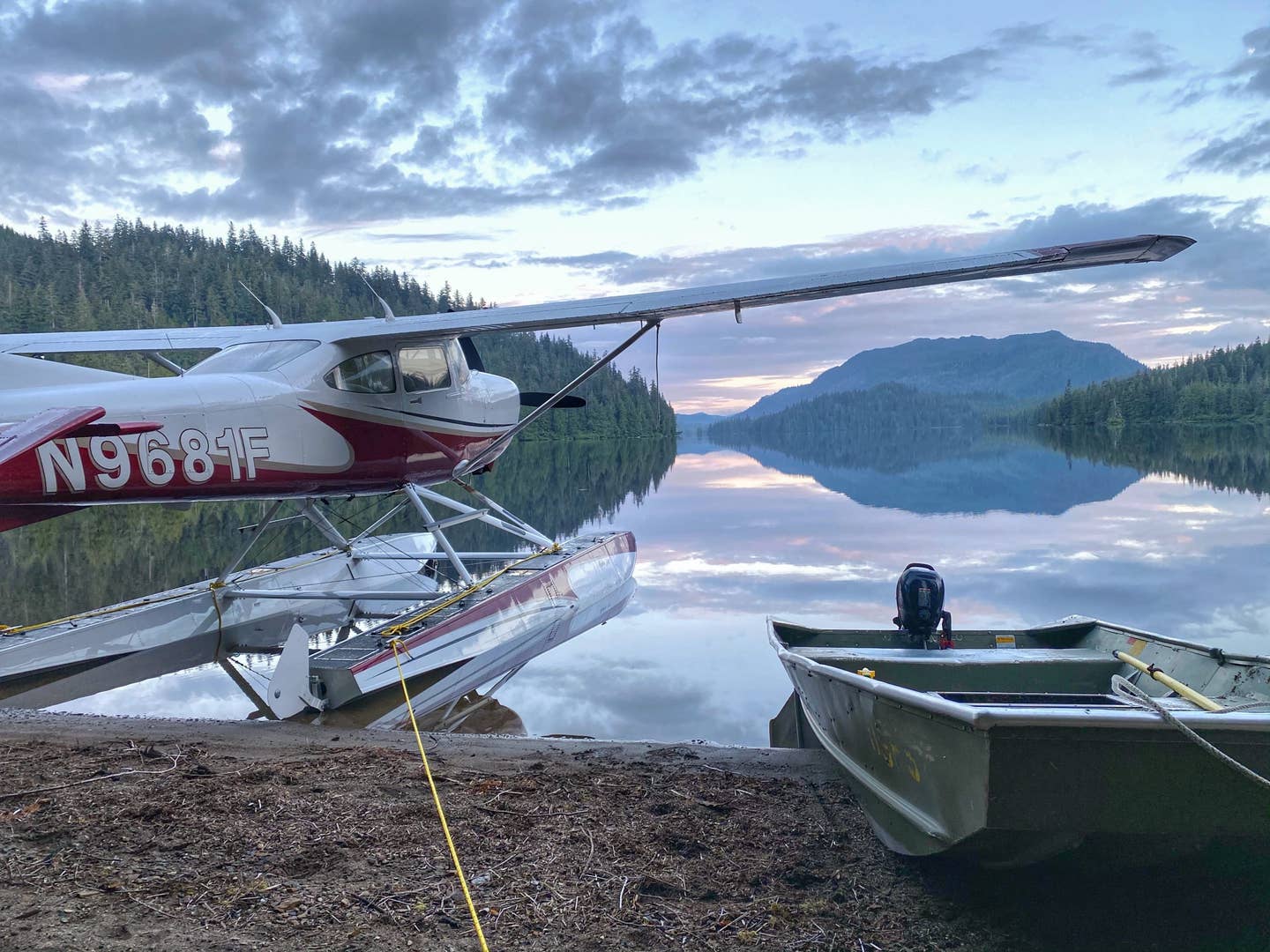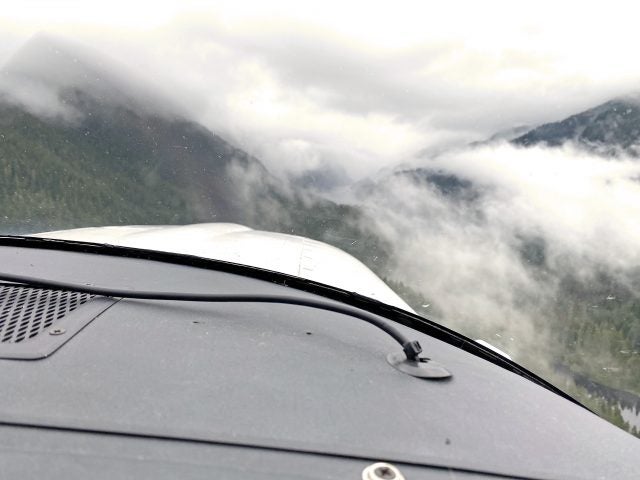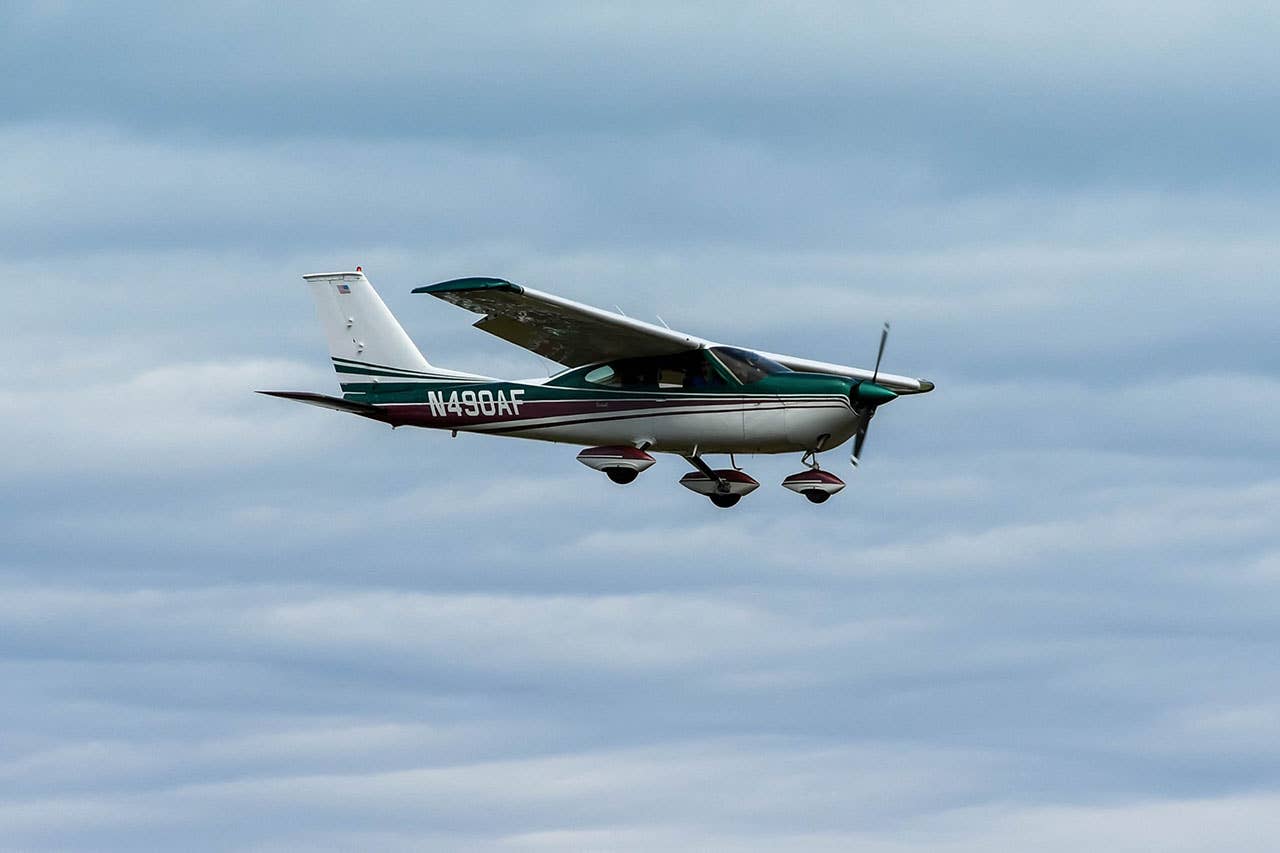Lessons Learned About Flying (and about life): About Alaska
As the Cessna Amphibian I’m flying emerges from the ragged overcast into the fading light of a cool September evening, I can barely pick out the end of the runway…

Lessons Learned: Flying Alaska
As the Cessna Amphibian I'm flying emerges from the ragged overcast into the fading light of a cool September evening, I can barely pick out the end of the runway through the rain-smeared windshield. A stiff left crosswind shoves me off centerline, requiring a boot-full of rudder to keep the nose straight. After touchdown at my small central Texas airport, feeling relieved to be safely on the surface, I slowly taxi to a parking spot and shut down the big Lycoming. In the enveloping silence, I remain seated for several long minutes as the realization sinks in that this summer's Alaska adventure is truly complete.
The trip took nine weeks and almost 100 flight hours, covering thousands of miles through some of the most amazing scenery and some of the worst weather I've seen, including furnace-like heat across the southern tier of states, followed by near-constant rain and low ceilings in Southeast Alaska. Throw in an in-flight emergency, and you get to enjoy an unplanned and expensive week in Oregon while engine repairs
are made.
While in Alaska, I was joined by several friends and family members who flew in via airline to spend a week or more sharing the adventure. The mercurial weather left us occasionally trapped in town, sitting in a motel waiting on improving conditions so we could get out to our destination.
Even when we finally made it out to the wilderness cabins of the Tongass National Forest, there were times when we were stuck in a small, dark cabin, unable to do much more than hunker down and watch the rain pour off the wood-shingled roof, unable to fish or explore. Other times, we had to come back earlier than I would have liked to assure that my guests make an airline connection home. On my return trip back home to Texas, there were hours flown through wildfire smoke while dodging Temporary Flight Restrictions, then low ceilings across the final stretch---including a couple of IFR approaches to near minimums.
So why am I telling you this? Sounds like a rather miserable time, right? And, if one were given to focusing on the problems and disappointments that occasionally accompany such adventures, I would agree. And certainly, there were moments when it all seemed a huge mistake to have invested so much time, effort and money, only to have things turn out so differently from expectations.
But now, with perspective altered by the passage of time and distance, a more nuanced and balanced view comes into focus. Call it a distilling of what really matters. A reminder that we should be grateful for the journey and learn to appreciate the small events and activities that add texture to the memories.
"The trip took nine weeks and almost 100 flight hours, covering thousands of miles through some of the most amazing scenery and some of the worst weather I've seen, including furnace-like heat across the southern tier of states, followed by near- constant rain and low ceilings in Southeast Alaska."
Between the challenges, there were breathtaking vistas of pristine mountain lakes and immense wilderness landscapes where clouds fell from the forested ramparts to the rocky shores of the Inland Passage. I remember the lights of Juneau emerging from the mists of the Gastineau Channel at the end of a ridiculously long day. Steep slopes, brooding forest and black rocks, casting ribbons of whitewater onto the tidal flats below. Point Bishop, the JD Bridge, Ship Creek and the heliport, reporting points slowly rolling by before a friendly controller clears me to land on Runway 8.

The playful banter from the waitress at the Red Dog Saloon, who, facing an uncertain future given the devastation of downtown tourism by COVID- 19, still manages to dispense beer and attitude with a smile that almost hides the worry lines in her young countenance.
A silence beyond imagining as the engine sounds fade away while the floatplane coasts to a stop on the small gravel beach. Slowly, the waves from our landing dissipate, leaving a perfect mirror, reflecting trees, hills and sky of a mountain lake, deep in the forest, ours alone for the next few days. We sit there for a few minutes, unwilling to disturb the quiet, before climbing out to begin setting up camp. Speaking in hushed tones, as if in church, pausing often to simply look and listen. Beauty beyond description.
Home fries and scrambled eggs in a cast-iron skillet. And hot coffee made from filtered lake water. We eat our breakfast sitting at the old table in our small cabin, talking of earlier adventures, telling stories we've both told before. Sharing the latest news of children, wives and work. Then, we settle into a comfortable silence, simply happy to share this time and place. Two old friends with no secrets left to tell.
Cut to the sweet release of the Wipline Floats breaking free of the water's grasp. Instant acceleration and affirmation that flight is our floatplane's natural element, water streaming off the tails as our reflected image draws away.
These small realizations matter. Call it "mindfulness" if you must, but they are all too easy to miss in the drama and chaos of these turbulent times. Maybe we need to be reminded not to take them for granted but to stop, notice, reflect and appreciate simple pleasures such as...
The haunting cry of the loons, a curious flock unruffled by our presence, as they follow our small skiff across the inlet, where we hope to fool the trout rising to slurp this evening's hatch.
Sunlight breaking through the overcast to shine a celestial spotlight on the surrounding boreal forest, too many shades of green to count.
Returning at dark to our cabin just ahead of the weather, soon settled into my camp chair, whiskey in hand, watching skeins of rain drift across the lake while a woman I don't deserve cooks today's catch on a Coleman stove.
The values and lessons of uncertainty. Knowing the dangers, accepting this could end badly but convinced the juice is worth the squeeze. The unseemly arrogance of thinking about how we are among the cool kids, the precious few lucky enough to be here, before realizing we are not yet done with this, and there is plenty of time and many ways to screw it up.
Watching the line of floatplanes returning to the Juneau float pond at the end of a working day. Beavers and otters sliding down final, almost close enough
to touch. They turn and taxi to the dock, unloading passengers, fishermen and tourists, soon whisked away by shuttle vans while the young pilots complete their evening chores, shouting and teasing one another, looking forward to a bit of relaxation before it all starts again early tomorrow.
A hot shower after days in the wilderness followed by a cold beer, chips and salsa at the local Mexican restaurant while swapping stories with the waitress about her fishing trip yesterday. She is worried about her husband, who was just laid off due to COVID-19. They may have to sell the boat, she tells me.
The otherworld of the Misty Fjords as we try for Wilson Lake. There is a sense of implacable menace in this place, danger close around, as we weave our way through canyons of cloud and stone. Following the cascading river, a flash of water unveils the small lake far below. Diving now, flaps out, power off, gear up for water landing, deeper into the narrow cloud-choked valley, sinking past any possible go-around point toward a new adventure.
And, finally, the sweet sadness of one last leg, across the West Texas badlands into the hills of home. And, best of all, a warm embrace upon journey's end.
Finally home, I find myself already yearning to return. And thinking, maybe this isn't about a trip to Alaska at all. PP

Subscribe to Our Newsletter
Get the latest Plane & Pilot Magazine stories delivered directly to your inbox






